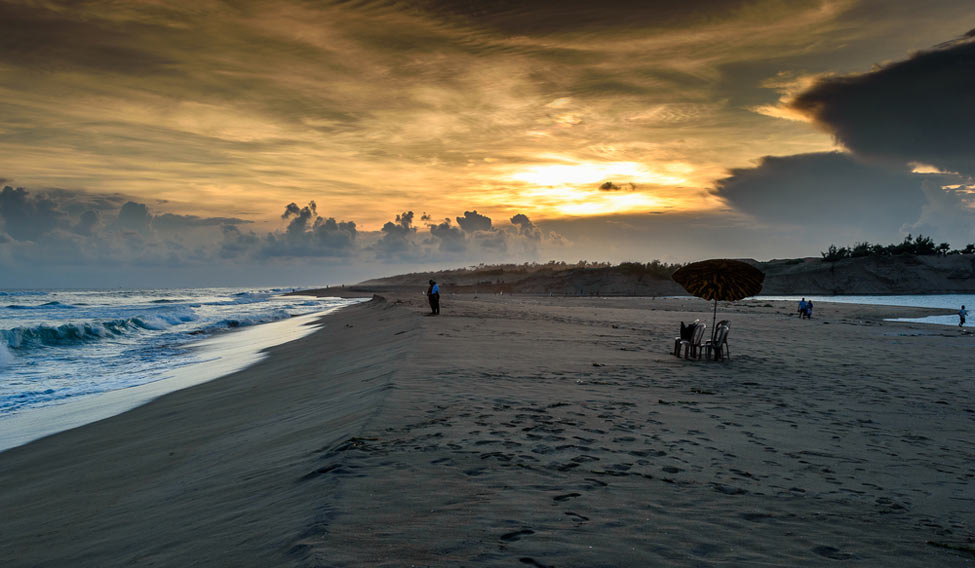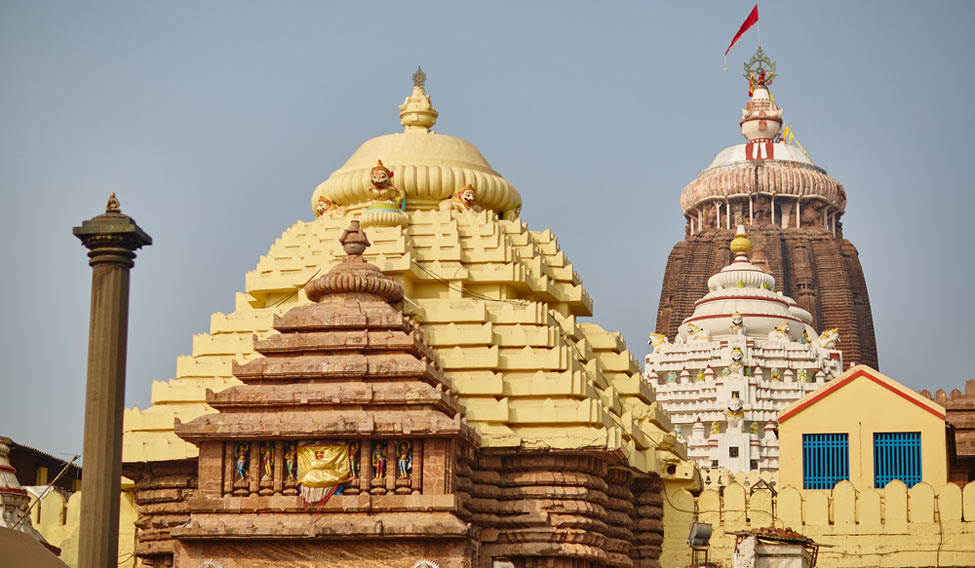Miles and miles of fluorescent green paddy fields covered in mist. A gleaming white Pagoda in the horizon. Impossibly blue skies with cotton candy clouds floating in and out of the frame. Patches of fluffy Kaash phool swaying to mild autumn breeze. And, among all this, the serpent of a road slithering majestically. No, I am not talking about some exotic location in the heart of the Indian Ocean, but a humble highway that is taking me from the capital city of Odhisha to the home of Lord Jagannath, Puri.
I have started my journey for Puri at 5 in the morning rather reluctantly — after a 24-hour long train ride, all I wanted was to sleep — but just twenty minutes into the drive, I am already glad that I have decided to spend my morning on this road rather than in the uncomfortable hotel bed. The hour-long drive turns out to be one of the most picturesque drives that I have taken in a long time.
Jagannath Puri, or Puri, as it is commonly known is a tiny town at the eastern edge of the country. Geographically, it is just another coastal town like many others in the state of Odhisha. But, historically, spiritually, and religiously it is one of the most important places in the country. It is, after all, the abode of Lord Jagannath, and one of the oldest cities in the Indian subcontinent.
All roads in Puri, naturally enough, lead to only one place — the Jagganath Temple. And all action is concentrated along the main street called boro dhandoo. at the end of which stands the imposing three-tired Jagannath temple.
We arrive at the main street, boro dhandoo, a little before seven and even though I want to drive all the way until the temple, we realize that cars cannot go beyond a certain point. It is holiday season and I expect the street to be narrow, claustrophobic, crowded, messy and chaotic. The breadth of boro dhandoo however defies whatever I have seen and experienced about temple towns until now. What I see along its length however is starkly similar: beggars, lepers, hawkers, vendors, policemen, rickshaw pullers, food sellers — all seem to co-exist comfortably along the margins of Puri’s lifeline. Soon we become a part of them.
According to folklore, Puri is believed to be the home to Lord Vishnu. It is said that the idol of Lord Jagannath, another form of Vishnu, or Krishna, had manifested itself at the shores of Puri in the Vedic times. Later, when Adi Shankaracharaya was laying the foundation of the four dhams, he made Puri the home of Vishnu. Some other estimates claim that the temple is more recent, and that a local ruler had built it about 900 years ago, in the 12th century. But everyone agrees with one thing — the temple has relics of Gods, which are the life force of the idols here. Those who frequent the place, also claim that unexplained energy can be felt inside the sanctum sanctorum of the temple. Being a sceptic, I have doubt.s
The temple stands along the Bay of Bengal, built on high platform enclosed by a high boundary. Four gates, one on each side, guard the complex. The Lion gate, or the Eastern gate, happens to be the main entrance and is adorned by large Lion statues and a tall monolith pillar called the Aruna Stambha. It is flanked by umpteen shops selling prasad and flowers, doubling up as shoe stands. There are cows too, scores of them sitting leisurely watching the world go by. The interior however, is surprisingly clean and organized.
 Puri beach
Puri beach
What I find interesting about the place is its unique form. The sprawling complex is divided into several sections and hundreds of small shrines dot the complex, each complete with its own deity and priest. In front of every shrine I see a congregation of people — mostly poor — with their hands folded and heads bowed, as if asking the Gods to rid them of their miseries. I wonder if God can really help them.
Whether or not God can help the pilgrims, the priests here surely claim to help people get closer to God.
The priests happen to be most powerful set of people inside the Jagannath temple complex. They are infamous world over for extracting huge sums of money as dakshina from innocent pilgrims in lieu of helping them connect with God and thus getting rid of their miseries.
Even as we walk past the shrines towards the main sanctum, a group of priests appears out of thin air. They ask, in Hindi, if we’d like to pray for our ancestor’s peace, or our children’s prosperity. Upon refusing, they insist that we do: what is the point of travelling so far if you do not worship? My husband’s knowledge of Oriya comes in handy at this point and he tells them off quietly yet assertively.
The main hall of the temple happens to be much less crowded than I had expected it to be. With its walls, pillars, and ceilings covered in traditional pattachitra paintings, it looks pleasantly vibrant. The sanctum is different too — a large dark hall devoid of any ornamentation and decoration. Other than a sea of people — this part of the temple is crowded — there is nothing between the Gods and you.
Unwilling to fight the crowd of devotees and priest, I decide to stand at the threshold of the sanctum, and directly look into the eyes of the deities. Even as I look at them transfixed by their sheer magnitude and grandeur, I can feel the energy and the power of this place in my gut. I now know why they say that the Gods reside in Puri.






